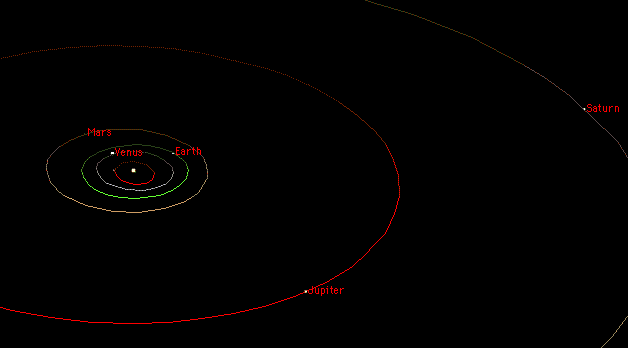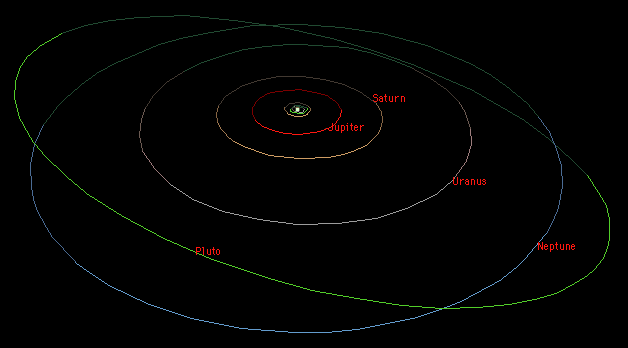(the comets and asteroids), and the interplanetary medium. The inner solar system contains the Sun, Mercury, Venus, Earth and Mars:

Basics
The solar system consists
of the Sun; the nine planets, sixty seven (67) satellites of the planets,
a large number of small bodies
(the comets and asteroids), and
the interplanetary medium. The inner solar system contains the Sun,
Mercury, Venus, Earth and Mars:

The planets of the outer solar system are Jupiter, Saturn, Uranus, Neptune and Pluto:

The orbits of the planets
are ellipses with the Sun at one focus, though all except Mercury and Pluto
are very nearly circular.
The orbits of the planets are all
more or less in the same plane (called the ecliptic and defined by the
plane of the Earth's orbit).
The ecliptic is inclined only 7
degrees from the plane of the Sun's equator. Pluto's orbit deviates the
most from the plane of the
ecliptic with an inclination of
17 degrees. The above diagrams show the relative sizes of the orbits of
the nine planets from a
perspective somewhat above the
ecliptic (hence their non-circular appearance). They all orbit in the same
direction
(counter-clockwise looking down
from above the Sun's north pole); all but Venus, Uranus and Pluto also
rotate in that same sense.